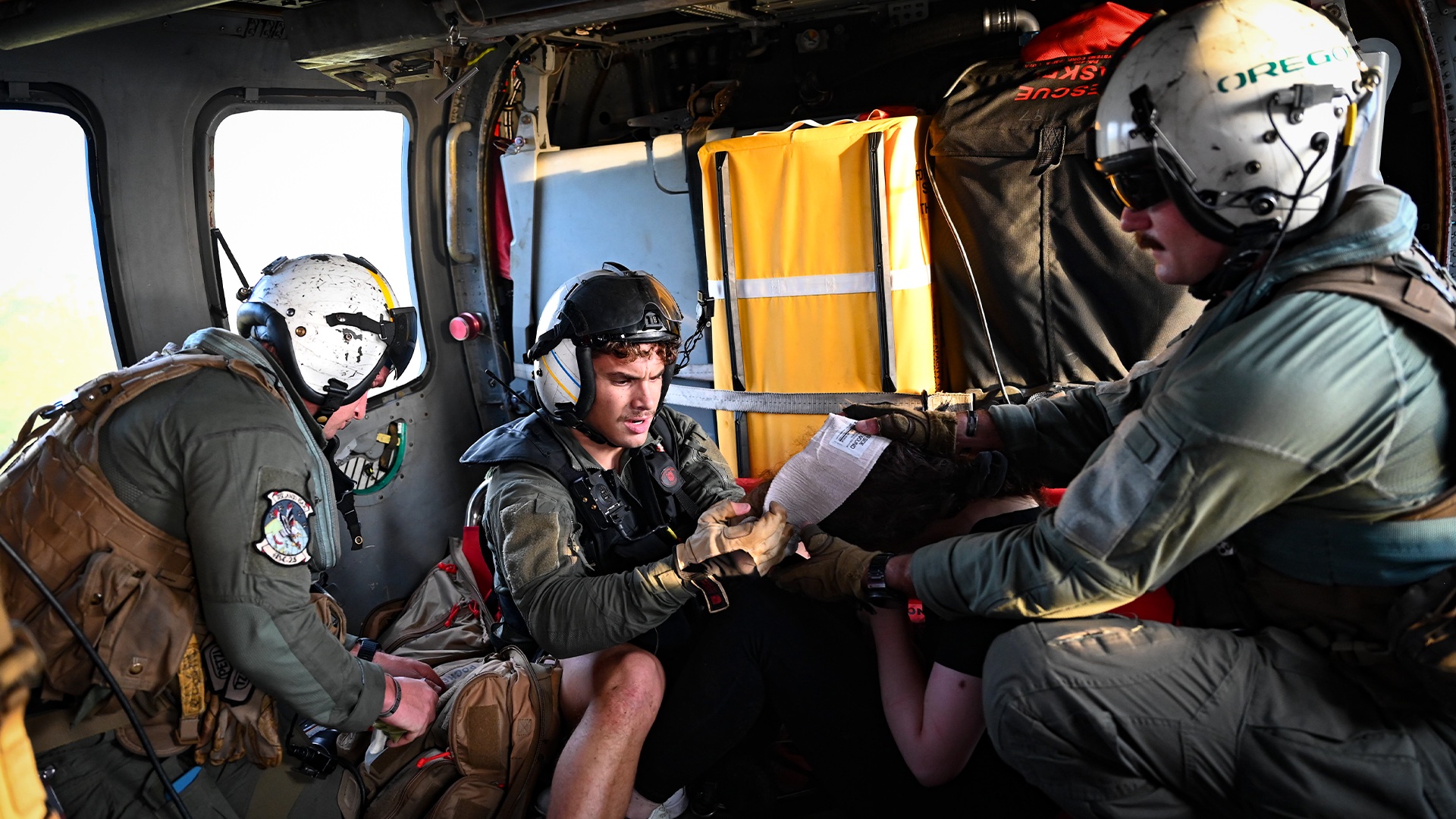

U.S. military flying crews practicing for a major war in the Pacific this month have been called twice to make real-life rescues in the middle of their training.
While flying training missions as part of Mobility Guardian 2023, U.S. aircrews have responded to a ship’s distress call off the Northern Mariana Islands and rescued a hiker who fell from a seaside cliff in Guam.
Mobility Guardian launched in early July as the largest training event on record for US and allied mobility forces to practice bringing cargo and troops across the vast distances of the Indo-Pacific theater. The exercise brought together 15,000 military cargo movers, planners and other troops from seven countries flying over 70 aircraft.
MG23, as planners call the event, kicked off with a record setting flight, when a British A400 — a prop-driven cargo plane larger than the U.S. C-130 but smaller than a C-17 — flew non-stop from its base in England to Guam, the longest flight ever for an A400. Using air-to-air refueling along the way, the flight took over 20 hours, traveling north from England to near the North Pole, then south across Alaska to Guam, which is twice as far across the Pacific from the U.S. mainland to Hawaii.
But that unique flight turned out to be just the beginning of notable MG23 missions.
Subscribe to Task & Purpose Today. Get the latest military news and culture in your inbox daily.
On July 10, French, Canadian, and U.S. forces participating in the exercise were alerted to a fishing vessel in distress approximately 30 nautical miles northwest of Rota, in the Northern Mariana Islands. A French A400, with four U.S. Air Force members flying as part of the crew, was the first to respond.
Circling overhead for several hours, the crew used “night vision capabilities and safety harnesses to locate the boat through open parachute doors,” to maintain visual contact with the vessel, according to an Air Force statement, and turned on their landing gear lights to maintain visual contact with the fishing vessel as well as with U.S. Coast Guard ships in the area.
“We were searching at 1,000 feet, conducting a snaking pattern, and everyone on the aircraft was looking out of some sort of window or door,” said Maj. Emily Smith from the 628th Force Support Squadron. “We knew how serious the situation was, and we knew we needed to do what we could to help.”
Having made contact with the fishing vessel, but with weather conditions preventing a ship-to-ship rescue, the French aircraft was eventually relieved by a Canadian HC-130. Around 1 a.m., a U.S. Navy MH-60 Knighthawk helicopter arrived and hoisted the 11 crew members of the fishing vessel to safety.
Then on July 18, a Navy MH-60S Knighthawk from Helicopter Sea Combat Squadron 25, which is permanently based at Anderson Air Force Base on Guam, was diverted from its participation in the exercise to rescue a hiker who had fallen off the side of a cliff in Guam.
“Receiving a SAR call during your training mission isn’t what you expect even though you know it could happen,” said Lt. Sterling Lambert, co-pilot of the rescuing helicopter.
The injured hiker was hoisted 150 feet to safety and later taken to U.S. Navy Hospital Guam for treatment.
The latest on Task & Purpose
- What you need to know about Biden’s IRR executive order
- Vet whose service dog died after violent arrest sues police
- Did Ukraine just assassinate a Russian submarine captain with his own Strava?
- Space Force NCO faces murder charges in shooting of two teens breaking into his Hyundai
- How the Air Force ran short of money for personnel
